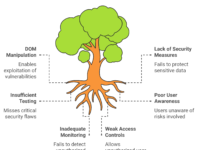In a Microservices World, Why Contract Testing Matters More Than Ever?
The growth of microservices and API-first architecture has led many teams to question:
"How do we make sure these services stay in sync without endless UI tests?"
-> That's where "Contract Testing" comes in play, to ensure that each microservice communicates effectively without putting all the testing weight on UI checks.This shift reflects a growing realization that while UI testing has its place, Contract Testing addresses many of the bottlenecks of testing in a service-oriented world. In this post, we’ll unpack how Contract Testing works, why it’s a game-changer for microservices, and offer a practical roadmap to start testing contracts like a pro. But first, let’s set the stage with a quote that captures the spirit of testing with reliability in mind:
“The test of a first-rate intelligence is the ability to hold two opposed ideas in mind at the same time and still retain the ability to function.”
— F. Scott Fitzgerald
Think of Contract Testing as holding together two opposing forces—consumer and provider—ensuring they don’t clash while maintaining the agility of microservices. Let’s look at why this is essential and how to achieve it.
What Exactly is Contract Testing? 📝
Contract Testing is like an agreement between two services—typically referred to as the consumer (the service that makes requests) and the provider (the service that responds). It ensures that both sides stick to the expected structure, format, and behavior of their data exchange. This approach means each service tests its API boundaries, allowing them to catch issues in their interactions before they impact the larger system.
In a Contract Test, the consumer specifies the expected data format, which the provider must fulfill. In essence, it’s like verifying a promise between two parties. If you’ve ever experienced a broken UI test due to an unexpected backend change, then you understand why Contract Testing is critical.
Visualizing the Process with a Mind Map 🧠
Contract Testing involves defining, managing, and validating interactions between microservices. Here’s a visual breakdown:
Real-Life Bottlenecks in Contract Testing 🚧
Let’s talk about some real-world challenges.
🍾 Bottleneck 1: Contract Evolution and Versioning 📅
As services evolve, contract changes can lead to versioning conflicts and impact other services.
- Solution: Introduce contract versioning and backward compatibility testing. Tools like Pact allow you to verify new versions against multiple consumer versions, reducing surprises in production.
🍾 Bottleneck 2: Mock Data Complexity 🧩
Setting up realistic mock data can be a struggle when testing in isolation.
- Solution: Use a contract mock server to simulate provider responses, allowing consumer testing without a live provider environment. This simplifies setup and avoids full-scale integration environments.
Why the Emphasis on Contract Testing? 🌐
In systems where everything communicates through APIs, Contract Testing provides several advantages:
- Early Detection: Contract Testing lets you catch issues in isolated services before they break production.
- Modularity: Services can be updated independently as long as they honor the contract, making development faster and more flexible.
- Reduced UI Dependence: By shifting left in the testing cycle, you can avoid reliance on brittle UI tests.
To borrow from James Bach’s philosophy, Contract Testing embodies the idea of “checking” more than “testing.” We check that the contracts hold but recognize that these checks only provide specific, bounded assurances—they don’t replace testing the software’s full behavior.
A Practical Example: Contract Testing in an E-commerce Application 📦
Let’s imagine a typical e-commerce microservices architecture. The Order Processing Service relies on the Inventory Service to check product availability. Here’s where Contract Testing plays out:
Order to Inventory Contract
- Definition: The Order Service expects an item’s details (name, price, quantity) from Inventory.
- Potential Issue: If Inventory changes the response format, Order might crash or behave incorrectly.
- Solution: A Contract Test checks that Inventory continues to respond with the agreed-upon data structure.
Inventory to Payment Contract
- Definition: The Payment Service expects Inventory to return available stock before authorizing a transaction.
- Issue: If Inventory’s response changes unexpectedly, Payment might authorize incorrect stock levels.
- Solution: A Contract Test verifies that Inventory’s response aligns with the Payment Service’s requirements.
Building Contract Tests: A Step-by-Step Guide 🛠️
Here’s a practical framework for implementing Contract Testing:
1. Define Clear Contracts
Create explicit contracts (YAML, JSON) describing inputs, outputs, and error handling for each consumer-provider pair.
2. Use a Tool to Manage Contracts and Tests
- Pact: Excellent for consumer-driven contracts, ensuring consumers define the contract, which providers validate.
- Spring Cloud Contract: Ideal for Java developers, offering tight integration with Spring applications.
- Postman: Though traditionally used for API testing, Postman can handle simplified contract validations.
3. Integrate with CI/CD Pipelines
Automate your contract tests in the CI/CD pipeline to ensure each service version remains compatible.
Sample Contract in JSON
jsonCopy code{
"description": "Contract for checking product availability",
"request": {
"method": "GET",
"path": "/inventory/{product_id}"
},
"response": {
"status": 200,
"body": {
"product_name": "string",
"available_stock": "integer",
"price": "float"
}
}
}
In this example, Pact will verify the provider’s response to confirm compatibility with the consumer’s expectations.
Comparing Types of Testing in Microservices 🌐
| Test Type | Purpose | Best for |
|---|---|---|
| Unit Testing | Isolate and test individual functions | Code functionality |
| Integration Testing | Test combined components | Service-to-service communication |
| Contract Testing | Verify agreed-upon data format | API and microservices consistency |
| End-to-End Testing | Validate user journey | Complete application flow |
Practical Tips for Effective Contract Testing 💡
- Version Control Contracts: Track contract versions to accommodate changes smoothly.
- Automate with CI/CD: Automate contract tests to run on every deployment, catching issues early.
- Align Expectations: Bring both consumers and providers into contract discussions to avoid misunderstandings.
Video Walkthrough 🎥
[Video Placeholder] Here, show a setup process for contract testing using Pact with a consumer and provider microservice in Node.js. Cover the basics of defining contracts, writing tests, and validating them in a CI/CD pipeline.
Key Takeaways 🎯
Contract Testing isn’t just a tool; it’s a shift in how we test in microservices architectures. By focusing on contracts, we’re validating promises between services and ensuring reliability in an API-first world.
In the words of James Bach: “Testing is an infinite process of comparison against the unknown.” While Contract Testing doesn’t replace testing for unknowns, it ensures that known boundaries are respected, keeping services in sync and resilient as they scale.
Whether you’re testing a small service or a complex architecture, Contract Testing gives you a way to guarantee that APIs hold up their end of the bargain.
Additional Resources










